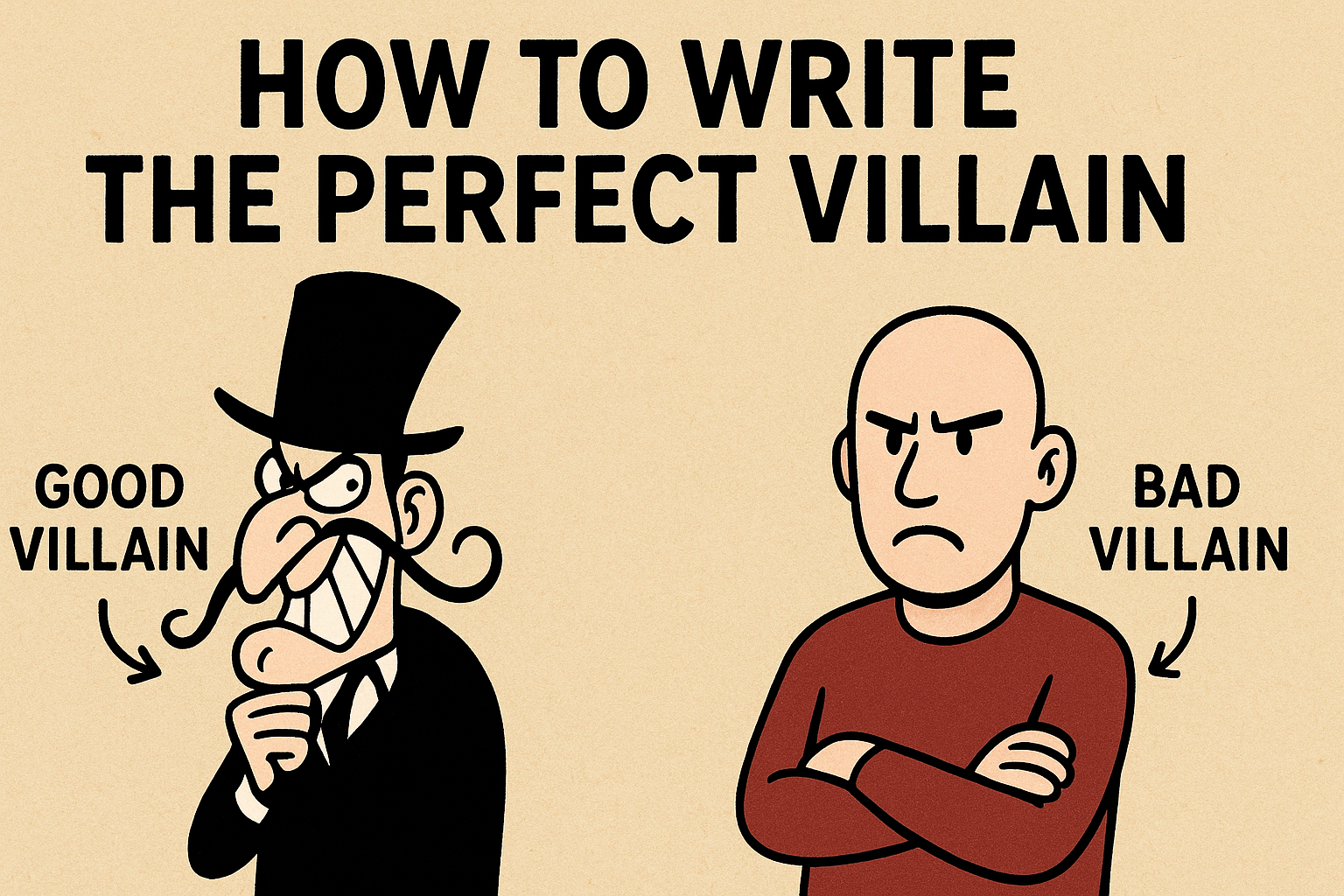How to write compelling villains

How to Write the Perfect Villain: A Beginner’s Guide to Crafting Memorable Antagonists
Writing your first villain can feel a bit like applying for your first job: you know you need one, you vaguely understand what they do, and you’re hoping no one notices you’re improvising.
But fear not! A great villain isn’t born—they’re written. Preferably by you, armed with this handy guide.
What Makes a Great Villain?
A strong villain does more than cackle ominously or lurk in cloaks (though both are perfectly acceptable hobbies). To truly elevate your story, your villain needs:
1. A Clear Motivation
Even if it’s misguided, readers should understand why your villain does what they do.
Good Example: Killmonger wants justice—he just takes a morally questionable scenic route.
Bad Example: “I’m evil because… I just am.” No. Send them back for rewrites.
2. Agency and Initiative
Your villain should move the plot—not wait for it.
Good Example: Darth Vader relentlessly hunting rebels.
Bad Example: Villains who sit in towers sending vague threats via courier pigeon.
3. Human (or Almost Human) Complexity
Your villain doesn’t need to be sympathetic, but they shouldn’t be made of cardboard, either.
Good Example: Gollum—tragic, creepy, and oddly endearing.
Bad Example: Evil Sorcerer #12, whose personality is “has staff, says ominous things.”
Common Villain Tropes to Avoid (or Subvert with Glee)
Villain clichés can be fun—but only if you’re intentionally using them. Otherwise, they’ll drag your story into predictability.
❌ The “Because Evil” Villain
If their entire motive fits in a three-word sentence, it’s too shallow.
❌ The Over-Explainer
Real villains don’t schedule PowerPoint presentations for their evil plans.
❌ The Incompetent Mastermind
If they’re supposedly brilliant yet repeatedly outsmarted by a distracted protagonist, you’ve got a mismatch.
❌ The Disposable Villain
If readers wouldn’t notice if they were replaced by a moderately annoyed houseplant, give them more depth.
How to Create a Villain Readers Will Remember
These steps will level up your antagonist instantly:
✔ Give Them a Strong Worldview
Your villain should believe they’re right—even when they’re spectacularly wrong.
✔ Let Their Goals Clash Directly with the Hero’s
Conflict is born when both sides want incompatible things.
✔ Let Them Win Sometimes
Small victories raise the stakes and make the eventual defeat satisfying.
✔ Make Them the Hero of Their Own Story
Their decisions should make sense from their perspective.
✔ Remember They Don’t Need to be Human
A great villain can be a person, system, monster, AI—or even a smug weather phenomenon.
Examples of Good and Bad Villains
⭐ Well-Written Villains
-
Magneto – ideology-driven, tragic, compelling.
-
Hannibal Lecter – charming, terrifying, oddly polite.
-
The Sheriff of Nottingham – corrupt, funny, and in perfect opposition to the hero.
🛑 Poorly Written Villains
-
Cruel for no reason
-
Villains defeated by convenient plot accidents
-
Antagonists who lose because they simply won’t stop monologuing
If the hero wins only because the villain is foolish, the tension evaporates.
Why Strong Villains Make Stronger Heroes
A hero is only as interesting as the villain who challenges them.
Your antagonist should force the protagonist to grow, adapt, and face uncomfortable truths.
If your hero feels flat, strengthen your villain—they’re two sides of the same narrative coin.
Final Thoughts
The perfect villain isn’t perfect. They’re flawed, driven, and alive with intention.
Give them real goals, believable motives, and a personality that complicates your hero’s life in deliciously narrative ways.
And remember: a well-written villain isn’t just good for the story…
They’re the most fun you’ll ever have writing dialogue.